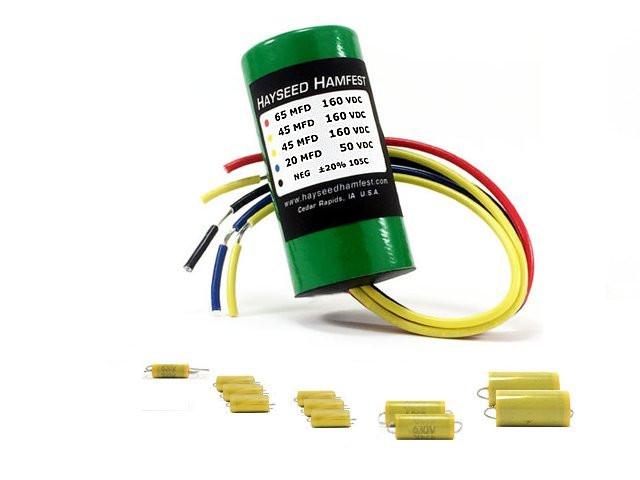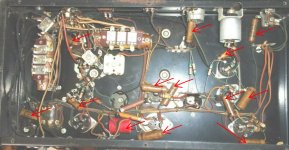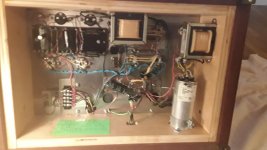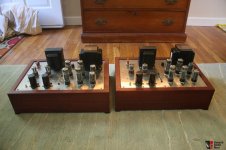A week or so ago I saw this image in a link over at the CMP forums....

The topic was "When was the first combat use of the Garand".
This is a picture of GI's on Bataan prior to the surrender and the Garand is present.
Someone commented on the Hallicrafters receiver set and noted that its not a GI item. The soldiers must have had a personal set and such a receiver would have allowed them to receive news and perhaps transmit to maintain comms and continue the fight.
I thought that was cool as hell and on a thread in Snipershide about comms.......lots of people buying Baofang and Yaesu HAM sets as other forms of communication continue to cancel people out......I made a comment that I thought that vintage radio set was cool as fuck being weaponized like it was and I wanted to get one.
Today I came back from my big walk and this is sitting on the porch....

Inside....



I suspect @gayguns has gifted me with awesomeness.
It came with a set of period instructions......I know nothing about setting one of these up. The station it is receiving is a strong local AM. Im sure with the appropriate antenna it would pull in some great stations........maybe I could be a test receiver for you nascent Baofang/Yaesu peeps.
The topic was "When was the first combat use of the Garand".
This is a picture of GI's on Bataan prior to the surrender and the Garand is present.
Someone commented on the Hallicrafters receiver set and noted that its not a GI item. The soldiers must have had a personal set and such a receiver would have allowed them to receive news and perhaps transmit to maintain comms and continue the fight.
I thought that was cool as hell and on a thread in Snipershide about comms.......lots of people buying Baofang and Yaesu HAM sets as other forms of communication continue to cancel people out......I made a comment that I thought that vintage radio set was cool as fuck being weaponized like it was and I wanted to get one.
Today I came back from my big walk and this is sitting on the porch....
Inside....
I suspect @gayguns has gifted me with awesomeness.
It came with a set of period instructions......I know nothing about setting one of these up. The station it is receiving is a strong local AM. Im sure with the appropriate antenna it would pull in some great stations........maybe I could be a test receiver for you nascent Baofang/Yaesu peeps.







